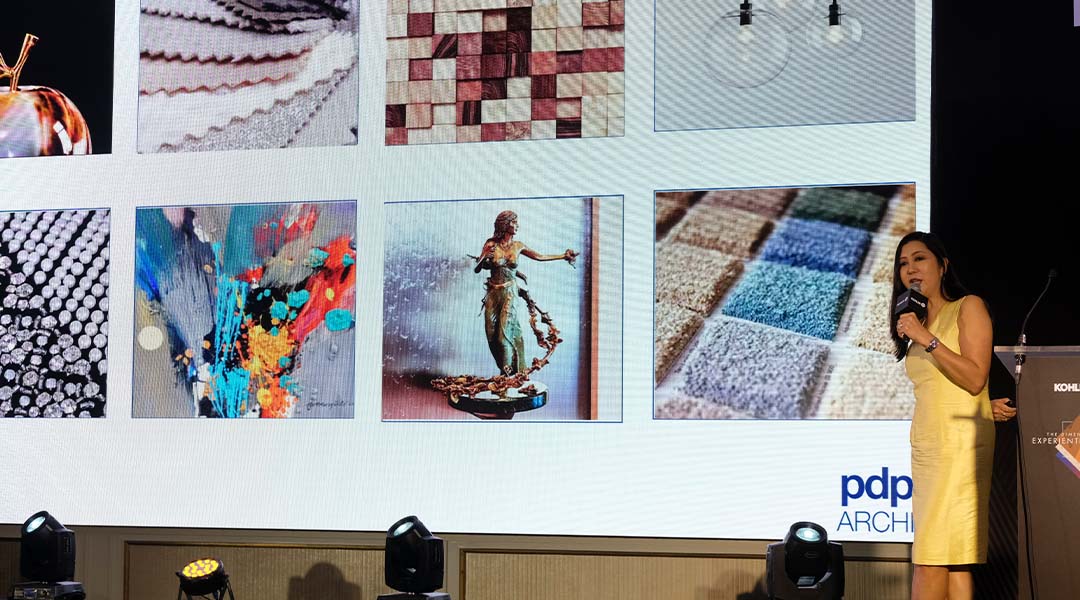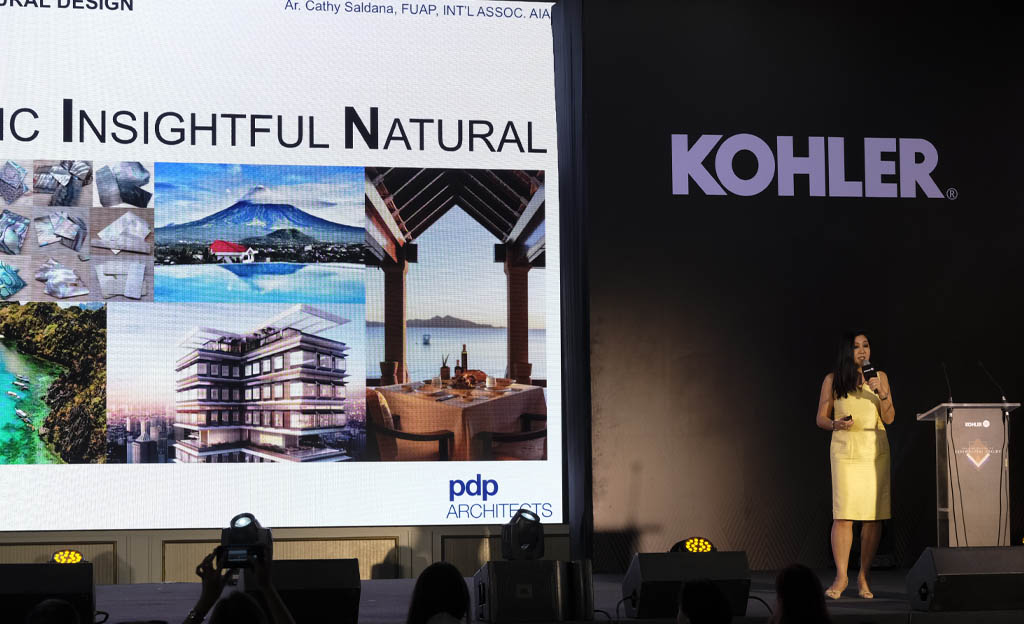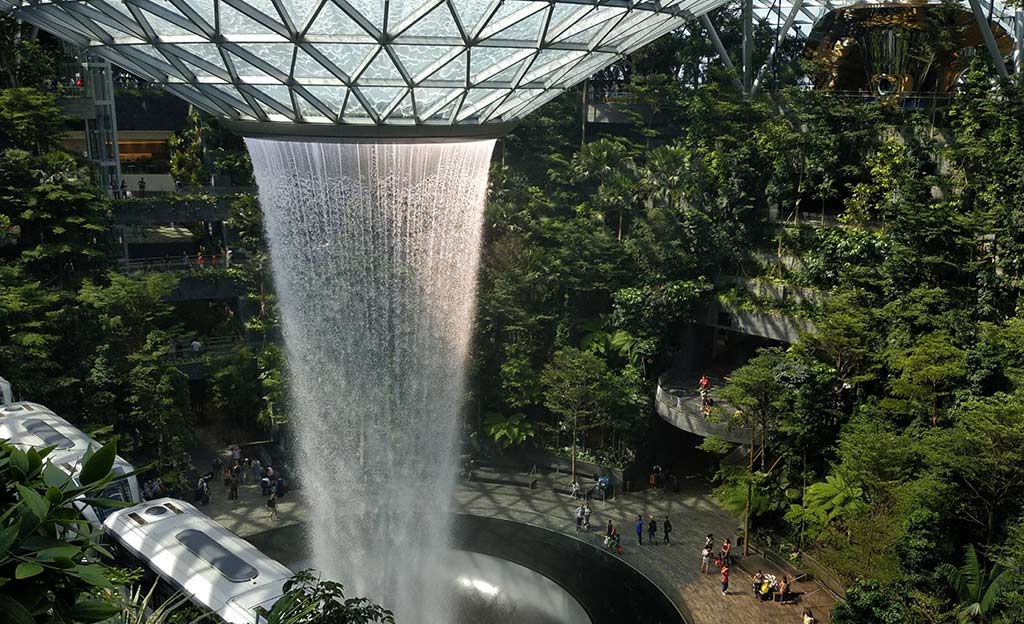
Experience, Not Expense: Cathy Saldaña on Luxury in Architecture
As one of the most prominent female architects in the Philippines, Cathy Saldaña’s architectural visions have materialized into some of the most endearing structures all over the country. A number of them, in fact, have been anchored on sustainability. Positioned as the Managing Director of ArcoGroup and co-owner of PDP Architects, Saldaña is primed to be an example to aspiring professionals in the industry to seek luxury architecture that is human-centric. She got the opportunity to do just that at the 4th Kohler Design Forum last October 29, 2019.
RELATED: Indulge Your Senses and Experience Luxury With Kohler
To be green is to be real

Often viewed as being rooted in expense, luxury goes beyond material worth to be something experiential instead. In the Philippines, the best form of luxurious experiences are through activities–no matter how thrilling or mundane–occurring within the confines of nature’s wonders. “Luxury could be an experience of a wonderful family dinner by the sand, on the shore, facing the limestone cliffs in El Nido, Palawan. Luxury is understanding that you are designing an experience that’s allowing you to feel something real, authentic, insightful, and natural,” said Saldaña.
These experiences are made possible through proper structure placement that pose minimal-to-no threat or invasion to nature. Saldaña mentioned, “It’s not luxury when you put a building that looks like it belongs in the middle of a city on, let’s say, limestone cliffs. That’s not luxurious; that’s jarring. You are not blending in, you are not welcome.” It’s a form of mutualism–both humans and the environment benefiting from each other’s graces, and Saldaña urged architects to keep this in mind.
The true foundation

Undoubtedly, every piece of architecture is made up of materials that work in conjunction with one another to create a sound structure. But luxury architecture would use materials that stimulate the senses–the wealth of material, color, texture, and components that work harmoniously with one another. It’s what brings forth the interaction between structure and inhabitant. The kinetic adaptation of these materials can highlight collaboration in design, such as how nature, in collaboration with technology, is injected into the heart of Changi Airport through the Rain Vortex and Forest Valley.
If finding the right materials for a sense of harmony seems challenging, Saldaña advised to not look that far. “When you build architecture, you should embrace the earth and not subdue it. For the Philippines, it is capiz shells, local wood species, warm colors–this is the natural luxury that we can have.”
But amid the wealth of materials and the plethora of ideas that may stem from them, designers should show restraint. “Luxury is in the right combination of materials: grand but not grandiose, elegant but not overdone,” Saldaña added.
Give space to breathe

In the end, when people live one with their environment, they relive the essence of being human. The earliest forms of shelter have always been that way–natural caves on the sides of mountains, huts out of branches and foliage, to name a few. According to Saldaña, that is the luxury architecture can offer in this highly-industrial age where human’s touch with nature is fading.
“Luxury is about having the right space that gives you a sense of comfort that brings you down to a certain degree of calmness and openness. This brings you back to being human, and when you are calm, you interact well with your environment, and that is where the work of design, whether architecture or interiors, becomes successful,” she concluded.
Photographed by Ed Simon


